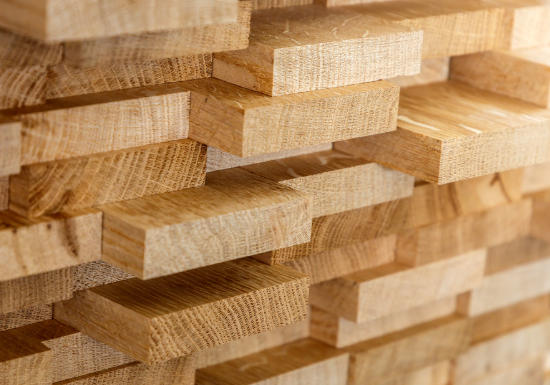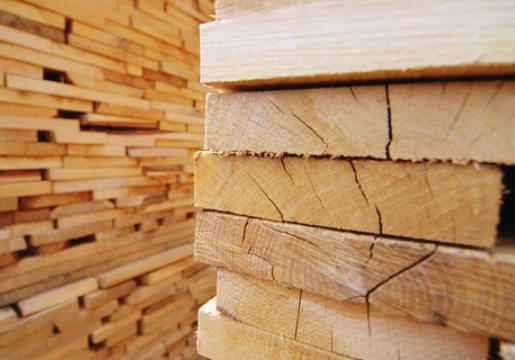










Content Menu
● Timber Classifications: Hardwood and Softwood
>>> Unique Features of Hardwood Timber
>>> Unique Features of Softwood Timber
● Hardwood vs Softwood: Biological and Physical Differences
● Commercial and Practical Applications
>> Architectural and Structural Uses
>> Furniture and Decorative Uses
● How to Identify Hardwood vs. Softwood Timber
>> By Source
● Advantages and Disadvantages
>> Sustainability in Timber Choices
● Innovations in Timber Technology
● Timber in Furniture and Design Trends
● Maintenance and Longevity of Timber
● Economic Impact and Global Timber Trade
● FAQ
>> 1. What is the difference between hardwood and softwood timber?
>> 2. What are the most common uses for hardwood timber?
>> 3. Is timber always hardwood?
>> 4. How can I tell if my timber is hardwood or softwood?
>> 5. Is hardwood timber better for outdoor use?
Timber stands at the heart of construction, furniture making, and architecture, valued for its versatility and natural beauty. In any building or craft project, one of the first questions often asked is: “Is timber hardwood?” The classification of timber as hardwood or softwood governs its strength, durability, appearance, and the kinds of projects for which it is best suited.[1][11][12][13][14]
This article explores what timber is, elucidates the ways it is classified, compares properties, discusses applications in modern industries, and guides users to make optimal material choices. Whether for furniture, structures, or finishing touches, understanding the nuances of hardwood and softwood timber enables smarter and more sustainable decisions.

Timber, also called lumber in North America, refers to wood that has been processed into beams and boards for construction and manufacturing. It is distinguished from raw wood by being cut, shaped, and sometimes treated for specific uses. Common applications include:[15]
- Building construction: houses, bridges, decking, cladding, framing[12][13][16]
- Furniture manufacturing: tables, chairs, cabinetry, shelving[11][14]
- Exterior landscaping: fences, decks, pergolas, outdoor structures[12]
- Specialty projects: musical instruments, crafts, sports equipment[1]
Timber's value comes from its strength, ease of shaping, renewable nature, natural appearance, and low embodied carbon compared to synthetic materials.[17][11]
Hardwood timber originates from angiosperm trees—species with broad leaves, flowering cycles, and annual leaf fall. Examples include oak, walnut, maple, mahogany, and beech. Hardwood trees grow slower and develop denser wood, which typically translates into harder, more durable, and visually appealing timber for construction and furniture. Notably, despite the name, not all hardwood is strictly “hard,” and exceptions exist. Balsa wood is a hardwood, yet remarkably soft by density and hardness metrics.[2][3][5][18][1]
- Greater density and strength: Ideal for flooring, cabinetry, beams, and load-bearing structures
- Decorative grains and colors: Adds distinction to visible surfaces and luxury items
- Expensive and slow to grow: Limited supply often leads to higher prices and targeted applications[3]
- Environmental benefits: Responsibly harvested hardwoods sequester carbon and are renewable when certified[17]
Softwood timber is sourced from gymnosperm trees, mainly conifers such as pine, fir, spruce, and cedar. These trees are usually evergreen, retaining needle-like leaves year-round. Softwoods grow faster and are less dense, making them lighter, easier to work, and more affordable.[2][3][11][1]
- Lighter and more flexible: Suited for framing, paneling, general construction, and pulp production[19][11]
- Commercially affordable: Fast growth supports mass-market production and large projects
- Simple grains and pale colors: Often preferred for painted or mass-produced items
- Adaptability with treatment: Softwoods can be pressure-treated or modified for increased outdoor performance[1][12]
- Hardwood trees grow slowly (often 80-150 years to maturity), forming tight annual rings and complex grain patterns.[3][2][1]
- Softwoods mature faster, often in 30-50 years, creating straighter trunks and simple, subtle grains.[2]
- Hardwoods: Possess tube-like pores (vessels) which enhance water/nutrient transport and result in prominent grain.[5][2]
- Softwoods: Use longitudinal tracheids and medullary rays for water transport, lacking visible vessels and producing sap.[2]
Hardwoods generally offer greater density, scratch resistance, and hardness, thus performing better under stress and environmental exposure. However, there are exceptions—a few softwoods are harder than some hardwoods (e.g., yew softwood is denser than cherry hardwood), and balsa hardwood is notably soft.[8][3][1]
- Hardwoods: Heavier, denser, typically darker in color[1][2]
- Softwoods: Lighter, less dense, usually pale or yellowish in color[2]

- Hardwood timber is preferred for structures needing maximum durability: flooring, beams, bridges, luxury interiors, boatbuilding, and high-stress environments.[20][11][1]
- Softwood timber dominates large-scale construction: house framing, decking, exterior cladding, plywood, and paper products.[9][14][2]
- Hardwoods bring visual sophistication to cabinetry, musical instruments, fine furniture, and paneling.[18][3]
- Softwoods are used for utilitarian furniture, shelving, window frames, and cost-effective décor.[9][11]
Both hardwoods and softwoods are used outdoors. Hardwoods have natural resistance to rot and decay, but some softwoods, like Western Red Cedar and treated pine, perform very well in exterior conditions after chemical modification or thermal processing.[5][17][1]
Modern engineered timbers, like cross-laminated timber (CLT) and glued laminated timber (glulam), combine softwoods and hardwoods for improved strength, dimension stability, and versatility in mass construction.[16][21]
- Grain: Hardwoods display complex, heavy grain; softwoods show much simpler patterns.[1][2]
- Color: Hardwoods are usually darker; softwoods lighter.[2]
- Hardness: As a rule, hardwoods resist scratches and damage, but exceptions exist.[1]
- Weight: Hardwood is heavier and denser; softwood feels lighter.[2]
If the timber is derived from a tree with broadleaves and flowers, it's likely hardwood. If it comes from a needle-leaf conifer, it's softwood. Leaf shape and presence of seeds/fruits can provide clues when inspecting a living tree.[1][2]
The Janka hardness test quantifies how easily wood can be dented. Hardwoods like maple score high; soft hardwoods (balsa) score low. Some softwoods, like yew, may have higher scores than some hardwoods, highlighting why taxonomy, not hardness, defines the types.[3]
| Property | Hardwood | Softwood |
|---|---|---|
| Density | High | Lower |
| Strength | Superior | Moderate |
| Workability | More difficult | Easier |
| Durability | Long-lasting | Sufficient (treated) |
| Visual Appeal | Sophisticated | Simple |
| Price | Expensive | Affordable |
Sustainability has become a defining issue in the timber industry. Proper forest management, replanting, FSC or PEFC certification, and efficient use of resources are central to responsible timber selection.[5][17]
- Hardwood forests require careful stewardship due to slow regrowth and rarity.[11][3]
- Softwood plantations offer faster turnaround, supporting continual supply.[9][2]
Reclaimed and recycled timber options are also increasingly available for eco-friendly projects.
Recent advances blend hardwood and softwood species for engineered timber products. Thermally modified softwoods, like ThermoWood®, mimic hardwood's durability and appearance, expanding outdoor usability while controlling costs. In sustainable “mass timber” architecture, layered softwoods create structural strength rivaling steel or concrete, pushing timber into high-rise construction.[16][12][1]
Timber selection shapes interior and exterior aesthetics. Dark-grained hardwoods add luxury and warmth to dwellings and high-end projects. Light, knotty softwoods foster minimalist, Scandinavian, or rustic styles. Designers combine both types for contrast, cost-efficiency, and environmental impact.[3][1]
Timber maintenance depends on the species, treatment, and application:
- Hardwood timber surfaces need regular sealing or oiling to preserve their color and resist scratching.[1]
- Softwood timber, especially in exterior use, should be pressure- or chemically-treated to withstand moisture, insects, and UV exposure.[17][1]
- Both types may weather to a silvery hue if left untreated, but will otherwise maintain beauty for decades with proper care.[17][1]
Proper finishing, cleaning, and inspection extend service life, whether timber is used indoors or out.
Timber remains one of the world's most valuable resources for domestic, industrial, and international use. Hardwood commands higher market value, especially in furniture and specialty applications, while softwood is essential in rapid construction and mass-market goods.[9][3]
- Major suppliers include North America, Europe, Asia, and Australasia.[17]
- Market prices and availability fluctuate with species rarity, sustainability certification, and geopolitical policies.
Global trade incentivizes responsible sourcing and encourages innovation, recycling, and multi-functional timber products.
Timber is not defined solely as hardwood; it encompasses both hardwood and softwood species, each offering unique benefits for construction, design, and everyday products. Hardwood timber is prized for its density, durability, and aesthetic beauty, suited to premium applications like flooring, furniture, and beams. Softwood timber's lighter weight, affordability, and workability make it indispensable for framing, large-scale builds, and exterior use. Advances in engineered timber continuously expand the possibilities for sustainable and cost-effective projects. Thoughtful timber choices—based on project requirements, appearance, cost, and sustainability—unlock the full value of this singular natural resource.[14][11][1]

Hardwood timber comes from flowering trees with broad leaves (angiosperms), generally featuring denser, stronger, and more decorative grains. Softwood comes from conifers (gymnosperms), growing faster with lighter, simpler grains and generally less density.[5][2][1]
Hardwoods are ideal for flooring, cabinetry, fine furniture, musical instruments, and structural elements requiring strength and visual distinction, owing to their durability and diverse grain patterns.[18][3][1]
No; timber refers to processed wood and can be either hardwood or softwood, depending on the species of tree it originated from.[14][15][11]
Check the species' leaf shape and grain. Hardwoods typically come from trees with broad leaves, display heavier grain and weight, and feel more resistant to scratching. Softwoods derive from needle-leaved conifers, are lighter, and often have subtler grain patterns.[2][1]
Hardwood timber is generally more resistant to decay and wear, making it suitable for outdoor structures with proper treatment. However, some softwood species, especially when treated, are also durable outdoors (e.g., cedar, treated pine).[5][17][1]
[1](https://duffieldtimber.com/the-workbench/timber-trends/hardwood-vs-softwood-what-are-the-differences)
[2](https://www.buskirklumber.com/hardwoods-vs-softwoods/)
[3](https://northcastlehw.com/blogs/wood/hardwood-vs-softwood-lumber-uses-and-differences)
[4](https://www.engineeringtoolbox.com/hardwood-softwood-species-d_2148.html)
[5](https://www.mortlock.com.au/learning/hardwood-vs-softwood-pros-and-cons/)
[6](https://royomartin.com/softwood-and-hardwood-cone-vs-nut-not-weak-vs-strong/)
[7](https://www.treatedwood.com/learn/wood-101)
[8](https://www.laver.co.uk/blog/hardwood-vs-softwood-whats-the-difference.html)
[9](https://www.homedepot.com/c/ab/types-of-lumber/9ba683603be9fa5395fab90567851db)
[10](https://frankmiller.com/understanding-different-types-of-wood-hardwoods-vs-softwoods/)
[11](https://www.damgoodpatios.com.au/is-timber-a-hardwood/)
[12](https://testbook.com/civil-engineering/properties-and-use-of-timber)
[13](https://civiltoday.com/civil-engineering-materials/timber/182-properties-of-timber)
[14](https://mrtimbers.com/timber-vs-wood/)
[15](https://www.inflamed.eu/post/understanding-the-distinctions-timber-lumber-and-wood)
[16](https://www.sciencedirect.com/science/article/pii/S1364032116306050)
[17](https://friendsoftheearth.uk/sustainable-living/different-types-wood-timber-az-good-wood)
[18](https://www.timberlinehardwoods.com/wood-faqs)
[19](https://www.tacoma.uw.edu/advancement/timber/timber-properties)
[20](https://www.britannica.com/topic/hardwood)
[21](https://www.flooringinc.com/blog/engineered-hardwood-faq)